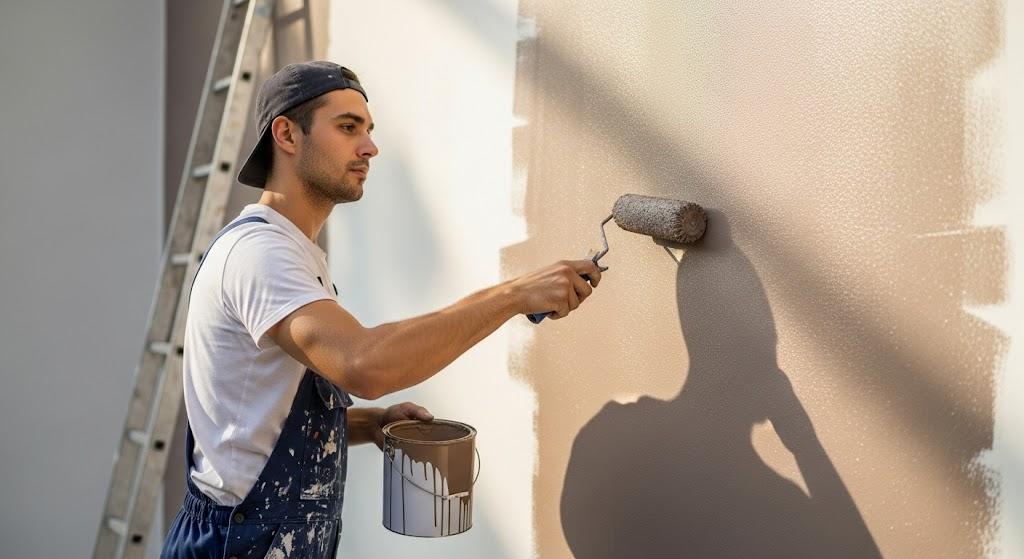When I first started looking into hiring a painter, I was surprised by the wide range of prices.
Some quotes felt sky-high, others suspiciously low, and I had no idea what was fair. If you’re in the same boat, I’ve been there too.
That’s why I put together this guide to help you understand what painters actually charge, what factors impact the cost, and how to avoid overpaying for your project.
If you’re freshening up a single room or planning to repaint your whole exterior, I’ll walk you through what to expect and how to budget smart.
Grab a notepad (or your Notes app), and let’s break it down together. And if you’ve got a question as you read, don’t be shy. Drop it in the comments below!
How Much Should You Pay a Painter?
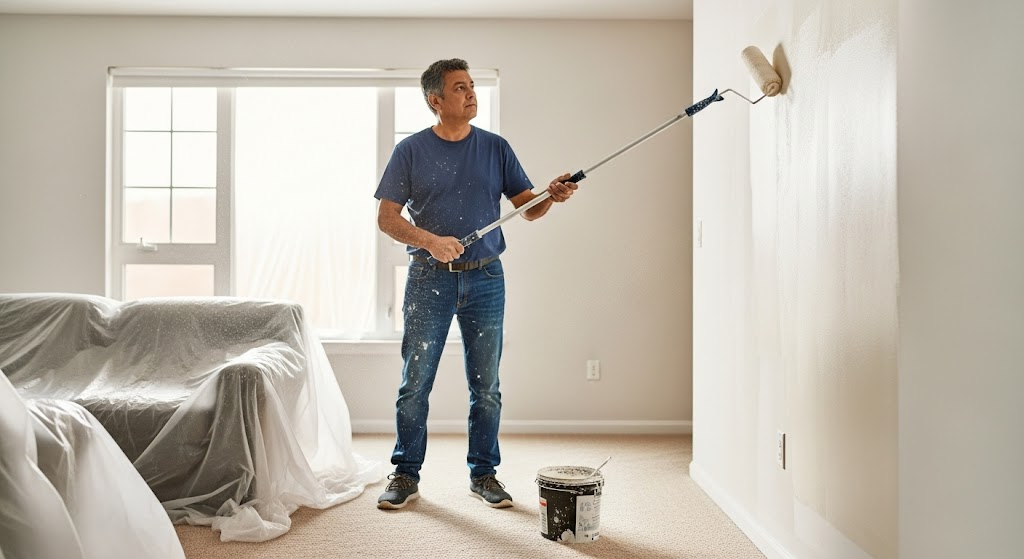
Hiring a professional painter involves more than just choosing a color and getting a quick quote. The total cost of painting services can vary widely due to a number of factors.
These include the square footage of the area to be painted, the type and condition of the surfaces, the amount of prep work required, the quality and brand of paint selected, and regional labor rates.
Additionally, factors such as ceiling height, the presence of trim or molding, and the requirement for special finishes or multiple coats can all impact the final price.
Exterior painting jobs may incur higher costs due to the need for scaffolding or specialized equipment, especially in multi-story homes.
Understanding these cost drivers is essential for planning and budgeting a painting project, whether it involves a single room or the entire home.
Average Cost to Hire a Painter
Professional painters typically charge using one of three methods: by the square foot, by the hour, or a flat rate per job.
Each pricing model suits different project types and scopes, but factors such as location, wall condition, and complexity all influence the pricing.
Interior Painting Costs
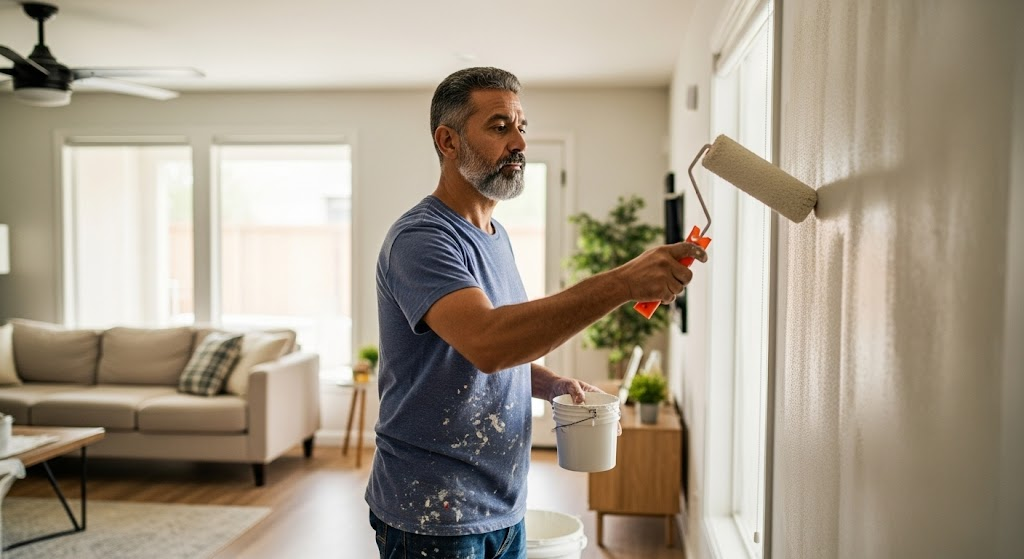
Interior painting can vary significantly based on the type of surfaces, room features, and level of prep required.
Labor alone typically accounts for 70% to 85% of the total bill, especially if the project involves high ceilings, specialty finishes, or damaged walls that need repair.
- Walls Only: Costs typically range from $1 to $2.50 per square foot. This includes standard two-coat coverage on clean, flat drywall.
- Ceilings: Expect to add $1 to $2 per square foot, especially if ceilings are textured or higher than 9 feet, which requires additional equipment and time.
- Trim and Baseboards: These cost $1 to $3 per linear foot, depending on the level of detail and whether sanding or priming is required.
- Doors and Closets: Painting these adds between $50 to $200 per unit, depending on size, material, and the number of coats required for full coverage.
Other factors influencing cost include bold or dark color selections (which often need multiple coats), patching holes, removing wallpaper, or working around tight corners or built-ins.
Complex projects with intricate finishes or older plaster walls will push the price toward the higher end.
Exterior Painting Costs
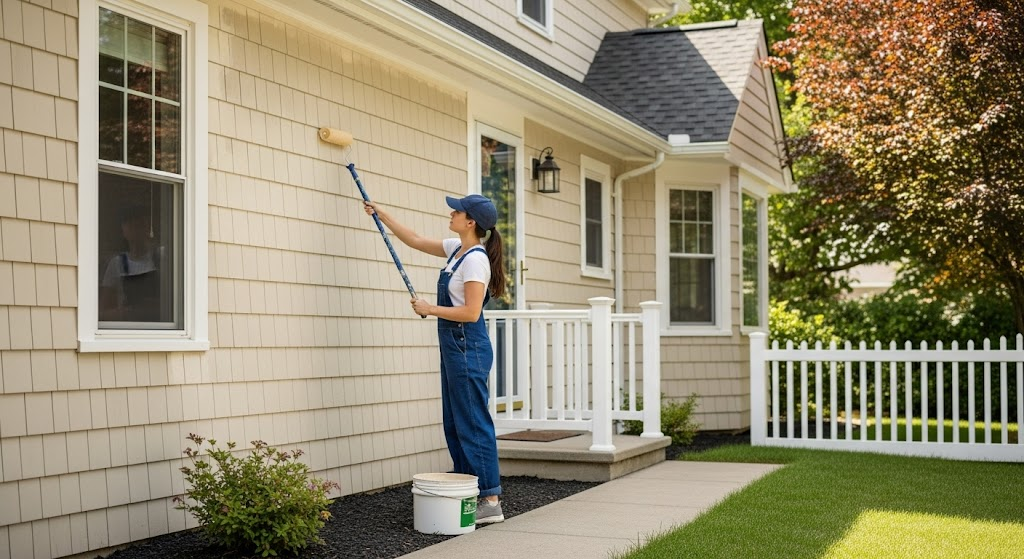
Exterior painting tends to cost more than interior work due to the extra labor and preparation involved, along with exposure to the elements.
Painters must account for surface cleaning, repairs, and protection of windows, landscaping, and nearby surfaces.
- One-Story Homes: Expect to pay between $1,500 and $4,000, depending on size and siding type.
- Two- or Three-Story Homes: Larger homes may cost $3,000 to $7,000 or more, especially if special equipment like scaffolding or boom lifts is needed.
- Siding Material: Wood, stucco, and brick require more surface prep than vinyl or aluminum. Wood may need sanding and priming, while stucco may require patching or sealing first.
- Surface Repairs: Fixing cracks, replacing rotten trim, and caulking gaps will increase both labor time and material costs.
- Prep Work: Power washing, masking off windows and doors, scraping loose paint, and priming all add to the final bill. Some painters charge separately for this prep, while others include it in a flat estimate.
Weather conditions, location, and the need for weather-resistant coatings can also raise the price.
Because exterior painting is often seasonal, scheduling in off-peak months may save you money, but it depends on local climate and painter availability.
| Type of Painting | Cost Range | Details |
|---|---|---|
| Interior Painting | $2 – $6 per square foot | Includes labor, basic prep, and two coats of paint. Example: A 10×12 room can cost between $300 and $800. |
| Exterior Painting | $1.50 – $4 per square foot | May require more labor, with costs ranging from $3,000 to $7,000 for a 2,000 sq. ft. home. |
| Hourly Rates | $25 – $75 per hour | Rates vary based on experience, location, and project complexity. Smaller jobs or touch-ups are often priced this way. |
What Impacts Painter Pricing?
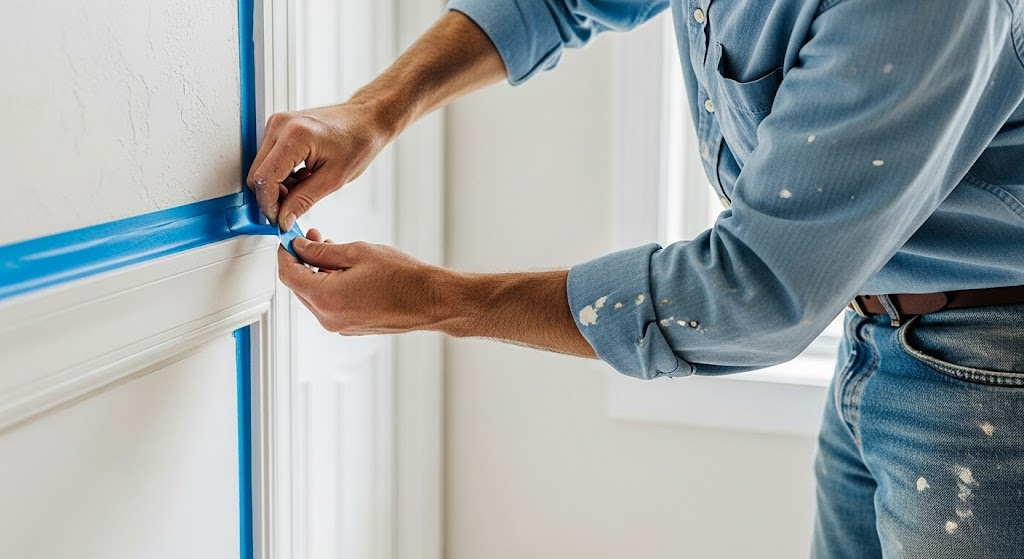
Painter pricing varies based on several key factors, such as wall size, surface condition, paint type, and location. Knowing these can help you budget more accurately and avoid surprise costs.
1. Square Footage
The size of the area to be painted is one of the biggest cost drivers. More square footage means more paint, more labor, and more time.
Larger surfaces may also require additional prep and cleanup. Whether it’s a single room or an entire house, expect the price to increase proportionally with the total area that needs coverage.
2. Wall Condition
Walls that are chipped, cracked, stained, or uneven need to be repaired before painting begins. This may involve patching holes, sanding down rough spots, applying primer, or even skim coating.
All of these steps add time and material costs. The better the condition of the walls before work begins, the less labor the painter has to perform and the lower the price you may pay.
3. Ceiling Height
Standard ceilings are typically 8 feet high, but anything taller can raise the project cost. High ceilings require ladders or scaffolding, adding time and safety considerations.
In rooms with vaulted ceilings, the added height complicates every step, from cutting in edges to rolling out paint evenly, which means more labor hours and often a higher final bill.
4. Paint Type and Finish
The quality and finish of the paint you choose also impact the total cost. High-end paints with built-in primer or low-VOC formulas cost more upfront but may last longer and cover better in fewer coats.
Finishes like satin or semi-gloss are often more expensive than flat or matte and may require more precise application, raising labor intensity.
5. Geographic Location
Where you live plays a major role in pricing. Urban areas and regions with a higher cost of living tend to have higher labor rates.
For example, hiring a painter in New York City or San Francisco will generally cost more than in a rural town. Prices can also vary due to local demand, the availability of skilled painters, and regional licensing requirements.
6. Time of Year
Painting costs can fluctuate seasonally. Most painters are busiest during spring and summer when the weather is ideal for both interior and exterior work.
Scheduling your project during slower months, typically late fall or winter can lead to discounted rates.
However, be mindful of weather challenges for exterior jobs in colder climates, which can affect scheduling and paint performance.
How Painters Charge: Hourly vs. Flat Rate
Painters typically use three main pricing structures: hourly rates, flat rates, or per-square-foot estimates, and each suits a different type of project.
| Pricing Method | Best For | Typical Rate | Pros | Cons |
|---|---|---|---|---|
| Hourly Rate | Small, detailed, or unpredictable jobs | $25 – $75 per hour | Flexible, great for time-limited tasks | Costs can add up if the job takes longer than expected |
| Flat Rate | Entire rooms or whole-house projects | Varies (based on scope & materials) | Predictable total cost, easy to budget | May include padding for risk |
| Per Square Foot | Large surfaces like full interiors/exteriors | $1.50 – $6.00 per sq. ft. | Scales with size are useful for comparing bids | May not reflect difficulty or detailed work |
Tip: Quotes often include paint, primer, minor repairs, taping, masking, and cleanup, but always confirm.
Material Costs in a Painting Project
Understand how much paint, primer, and essential supplies contribute to your total painting budget, and learn what’s usually included in professional quotes.
| Item | Typical Cost | Notes |
|---|---|---|
| Paint | $20–$40 (budget), $50–$90 (premium) | It depends on the brand and finish (matte, satin, semi-gloss, etc.) |
| Primer | $15–$25 per gallon | Needed for covering stains or switching between light and dark colors |
| Supplies | Often included in labor quote | Includes brushes, rollers, tape, drop cloths, caulk |
| Material Share | 15–30% of total project cost | Varies based on job size and paint type |
| Client-Supplied Paint | Sometimes allowed | Many pros prefer using brands they know and trust |
Painting: DIY vs. Hiring a Pro
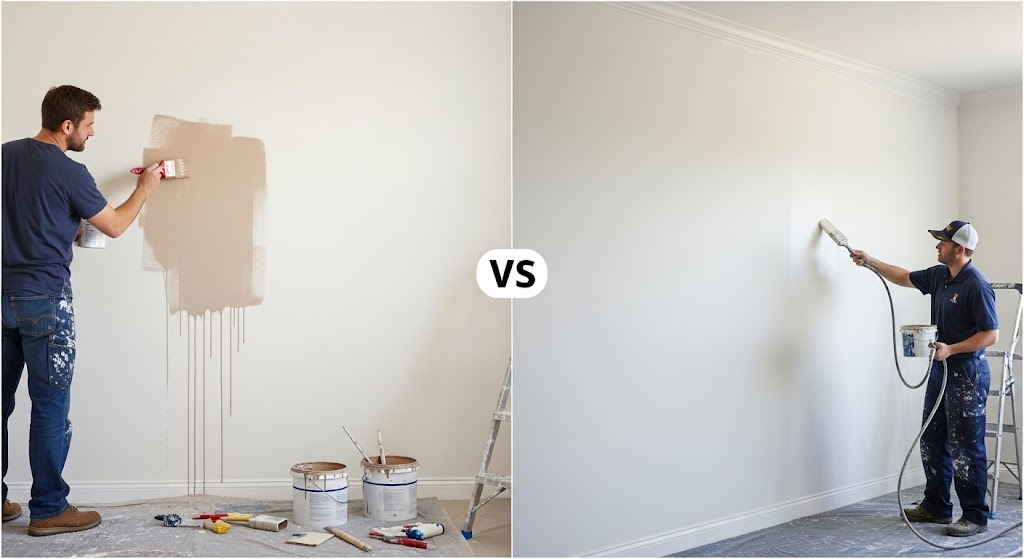
Deciding between DIY and hiring a pro comes down to time, budget, and the scope of your project.
DIY Painting: Cost Breakdown
When painting your apartment yourself, you can expect to spend between $130 to $250 for a 10×12 room. This includes the cost of paint, tools, and supplies, such as rollers, brushes, and painter’s tape.
You’ll need to dedicate 6 to 12+ hours to complete the project, depending on the size of the room and your painting speed.
While DIY painting is a cost-effective option, the finish quality may not be as polished as professional work. You might encounter drips, streaks, or uneven edges, which may require additional touch-ups.
DIY painting is best suited for smaller rooms or touch-ups when you’re working with a budget.
Hiring a Professional: Cost Breakdown
Hiring a professional painter will generally cost between $300 and $800 for a 10×12 room, depending on factors like room complexity and the painter’s experience.
Professionals handle the labor, prep work, priming, and cleanup, ensuring a consistent, clean, and polished finish. They typically complete the job in 2 to 6 hours, significantly faster than DIY.
While this option is more expensive, it provides peace of mind and guarantees quality results. Hiring a pro is ideal for larger projects, high-traffic areas, or when time is limited and you want long-lasting results without the hassle.
How to Get Accurate Quotes from Painters
Learn how to request and compare painting estimates effectively to avoid hidden fees, missed details, and mid-project cost surprises.
- Get Multiple Quotes: Request at least 2–3 estimates from licensed, insured painters to compare pricing and professionalism.
- Ask for Details: Ensure the quote clearly outlines labor, materials, surface preparation, number of coats, and cleanup.
- Schedule a Walkthrough: Let the painter inspect the wall size, condition, and access to provide the most accurate quote.
- Clarify Exclusions: Ask what’s not included, like wall repairs, moving furniture, or using more than one color.
- Avoid Surprises: A detailed, written estimate helps prevent unexpected costs and project scope changes later on.
Conclusion
By now, you’ve got a clear picture of what it really costs to hire a professional painter and what affects the price.
From hourly rates and paint quality to prep work and surface repairs, each detail plays a role in your final quote.
The smartest thing you can do? Compare estimates, ask questions, and decide where it makes sense to spend or save. If you’re getting ready to paint a room or even your whole house, use this guide to plan wisely and avoid surprises.
Want to share how your painting project went or have a question I didn’t cover?
Drop a comment below. I’d love to hear from you and help however I can!
Let’s get those walls looking amazing.

